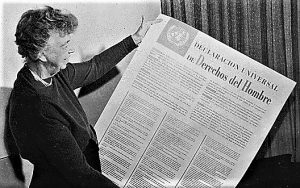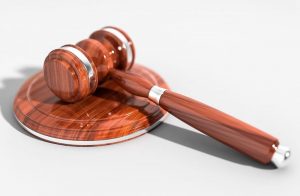Causal link
The causal link in a basic element within the area of civil responsibility. It is the cause-and-effect relationship that must always exist between an unlawful civil act or omission and the damage caused by this omission, in order to have liability and, therefore, the duty to compensate. It is a relationship between the action that determines damage or the omission of the action and the damage itself.
What is the causal link?
It is a cause-effect relationship that allows us to establish the facts that must be considered in order to determine the damage and what caused the tangible harm. It is necessary to claim the damages caused to the author or liable party.
About the causal link
It consists of the relationship that exists between the result and the action, which allows us to affirm that the result has been produced by the action. We must remember that crime is a conduct or a human act, which comprises, on the one hand, the action carried out and the action expected and, on the other, the result that has occurred. In order for this to be incriminated, it is necessary that a causal link or a causal relationship exists between the human act and the result that has been produced.
Then we can say that there is a causal relationship when the human act of will cannot be assumed, without the concrete result ceasing to occur. The causal link is then the relation that occurs between the conduct and the result and by means of which material can be attributed from this to that as a cause.
Theories
The causal link theories are as follows:
- Theory of objective imputation: it tries to explain through logical and evaluative criteria, in which circumstances Criminal Law can attribute a final result to the author of a conduct by the juridical order, which is, indefectibly, linked by a causal link. For this theory the balance and coherence of the social system is given because each person has a specific function that allows it and, the fulfillment of those roles allows the social system to develop without altering its basic structure.
- Theory of equivalence: it says that it is causal any condition of the result that, mentally suppressed, could make the result Establishing causality as a condition was enough to assert the presence of the objective type.
- Theory of adequate condition: it says that not every condition of the result is cause in the legal sense, only that which is habitually adequate to cause the result. The judgement of adequacy is formed by the objective probability or predictability of production of the result. The condition is adequate if for the prudent and objective man it is, put in the moment of the action, with all the knowledge of the situation that the author had when acting or that he should have had understands that it was very probable that the typical result was produced.
- Theory of relevance: it is a dogmatic refinement of the theory of equivalence, in which causality is affirmed by means of two differentiated studies: one of strict causal relationship between the event under analysis and the hypothetically linked result and, two, that this causal relationship is within the scope of protection of the norm.
Jurisprudence
The jurisprudence has as criterion a point of convergence that is the admission of lack of responsibility of the agent that causes the damage when there is a fortuitous case or force majeure, even if there is a causal link.
The union of criteria and jurisprudence occurs because both understand that what really happens within a specific case must prevail, that is, we must ask ourselves if the major force that we are observing is the cause of the damages or if, on the contrary, those damages would occur equally, even if there had not been that major force.
Causal link disruption
The causal link can be interrupted and some of the assumptions of this interruption are:
- Cases of guilt of the victim: in cases in which the fortuitous event could not be credited to the administration.
- Concurrence of faults: when the fault is shared with the Administration itself.
- Guilt of a third party in the production of a result that breaks the causality nexus, which implies the exclusion of the responsibility of the Administration.
- Major Force: some articles of the Constitution exclude the responsibility of the Administration and establish the obligation to compensate “except in cases of force majeure”.
Importance
The causal link is important because in the Criminal, Civil and Social order causality acts as a main axis because, in the legal plane, it is intended to show when a result can be attributed to an action and, therefore, the existence of a causal link between one and the other can be perfectly accredited.
Examples of causal link
Some examples of causal link are the following:
- If, for example, you fall in the street and break your arm, then the causal link will be the relationship between the fall and the fracture and, therefore, a civil liability is generated that can be claimed.
- If a person is waiting for a traffic light and a car hits him from behind, and the person in the first car suffers a cervical injury, the causal link will then be the relationship between the collision and the cervical injury. In order for it to be a causal link, one should not wait to go to the doctor because it can be argued that another has been the cause of the problem.
How to cite this article?
Briceño V., Gabriela. (2019). Causal link. Recovered on 3 January, 2025, de Euston96: https://www.euston96.com/en/causal-link/










